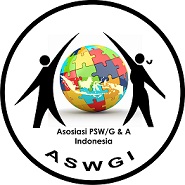THE RELATIONSHIP BETWEEN CONSUMPTION PATTERNS AND DIABETES MELLITUS DISEASE IN CEMPEDAK GROOVE VILLAGE
Abstract
Keywords
Full Text:
PDFReferences
Afandi, A. T., Putri, P., Darmawan, T. C., & Wijaya, C. P. (2024). Self-Efficacy With Anxiety Levels Of Diabetes Mellitus Patients In Hospital Care Settings. Journal Of Health Science, 17(2), 133–142.
Almatar, M., Islam, M. R., Albari, O., Var, I., & Koksal, F. (2017). Pomegranate As A Possible Treatment In Reducing Risk Of Developing Wound Healing, Obesity, Neurodegenerative Disorders, And Diabetes Mellitus. Mini-Reviews In Medicinal Chemistry, 18(6), 507–526. Https://Doi.Org/10.2174/1389557517666170419114722
Arokiasamy, P., Salvi, S., & Selvamani, Y. (2021). Global Burden Of Diabetes Mellitus: Prevalence, Pattern, And Trends. In Handbook Of Global Health: With 362 Figures And 152 Tables. Https://Doi.Org/10.1007/978-3-030-45009-0_28
Bhattacherjee, A., Davis, C. J., Connolly, A. J., & Hikmet, N. (2018). User Response To Mandatory IT Use: A Coping Theory Perspective. European Journal Of Information Systems, 27(4), 395–414. Https://Doi.Org/10.1057/S41303-017-0047-0
De Ridder, D., Kroese, F., Evers, C., Adriaanse, M., & Gillebaart, M. (2017). Healthy Diet: Health Impact, Prevalence, Correlates, And Interventions. Psychology And Health, 32(8), 907–941. Https://Doi.Org/10.1080/08870446.2017.1316849
Eizirik, D. L., Pasquali, L., & Cnop, M. (2020). Pancreatic Β-Cells In Type 1 And Type 2 Diabetes Mellitus: Different Pathways To Failure. Nature Reviews Endocrinology, 16(7), 349–362. Https://Doi.Org/10.1038/S41574-020-0355-7
Gwatidzo, S. D., & Stewart Williams, J. (2017). Diabetes Mellitus Medication Use And Catastrophic Healthcare Expenditure Among Adults Aged 50+ Years In China And India: Results From The WHO Study On Global Ageing And Adult Health (SAGE). BMC Geriatrics, 17(1), 1–15. Https://Doi.Org/10.1186/S12877-016-0408-X
Gwenzi, W., Mangori, L., Danha, C., Chaukura, N., Dunjana, N., & Sanganyado, E. (2018). Sources, Behaviour, And Environmental And Human Health Risks Of High-Technology Rare Earth Elements As Emerging Contaminants. Science Of The Total Environment, 636, 299–313. Https://Doi.Org/10.1016/J.Scitotenv.2018.04.235
Harrington, D., & Henson, J. (2021). Physical Activity And Exercise In The Management Of Type 2 Diabetes: Where To Start? Practical Diabetes, 38(5), 35-40b. Https://Doi.Org/10.1002/Pdi.2361
Koehler, K., Boron, J. B., Garvin, T. M., Bice, M. R., & Stevens, J. R. (2019). Differential Relationship Between Physical Activity And Intake Of Added Sugar And Nutrient-Dense Foods: A Cross-Sectional Analysis. Appetite, 140, 91–97. Https://Doi.Org/10.1016/J.Appet.2019.05.010
Lawrence, E. M., Mollborn, S., & Hummer, R. A. (2017). Health Lifestyles Across The Transition To Adulthood: Implications For Health. Social Science And Medicine, 193, 23–32. Https://Doi.Org/10.1016/J.Socscimed.2017.09.041
Ling, H. W. (2019). Why Are Diabetic Patients Still Having Hyperglycemia Despite Diet Regulation, Antiglycemic Medication And Insulin? International Journal Of Diabetes & Metabolic Disorders, 4(2), 1–14. Https://Doi.Org/10.33140/Ijdmd.04.02.03
Medina-Remón, A., Kirwan, R., Lamuela-Raventós, R. M., & Estruch, R. (2018). Dietary Patterns And The Risk Of Obesity, Type 2 Diabetes Mellitus, Cardiovascular Diseases, Asthma, And Neurodegenerative Diseases. Critical Reviews In Food Science And Nutrition, 58(2), 262–296. Https://Doi.Org/10.1080/10408398.2016.1158690
Ogurtsova, K., Da Rocha Fernandes, J. D., Huang, Y., Linnenkamp, U., Guariguata, L., Cho, N. H., Cavan, D., Shaw, J. E., & Makaroff, L. E. (2017). IDF Diabetes Atlas: Global Estimates For The Prevalence Of Diabetes For 2015 And 2040. Diabetes Research And Clinical Practice, 128, 40–50. Https://Doi.Org/10.1016/J.Diabres.2017.03.024
Olsson, T., Barcellos, L. F., & Alfredsson, L. (2016). Interactions Between Genetic, Lifestyle And Environmental Risk Factors For Multiple Sclerosis. Nature Reviews Neurology, 13(1), 26–36. Https://Doi.Org/10.1038/Nrneurol.2016.187
Reddi Nagesh, M., Vijayakumar, N., & Bhavani, K. (2020). A Review On Diabetes Mellitus- An Annihilatory Metabolic Disorder. Journal Of Pharmaceutical Sciences And Research, 12(2), 232–235. Https://Doi.Org/10.20959/Wjpps202010-17336
Ruissen, M. M., Regeer, H., Landstra, C. P., Schroijen, M., Jazet, I., Nijhoff, M. F., Pijl, H., Ballieux, B. E. P. B., Dekkers, O., Huisman, S. D., & De Koning, E. J. P. (2021). Increased Stress, Weight Gain And Less Exercise In Relation To Glycemic Control In People With Type 1 And Type 2 Diabetes During The COVID-19 Pandemic. BMJ Open Diabetes Research And Care, 9(1), 1–7. Https://Doi.Org/10.1136/Bmjdrc-2020-002035
Saeedi, P., Petersohn, I., Salpea, P., Malanda, B., Karuranga, S., Unwin, N., Colagiuri, S., Guariguata, L., Motala, A. A., Ogurtsova, K., Shaw, J. E., Bright, D., & Williams, R. (2019). Global And Regional Diabetes Prevalence Estimates For 2019 And Projections For 2030 And 2045: Results From The International Diabetes Federation Diabetes Atlas, 9th Edition. Diabetes Research And Clinical Practice, 157, 107843. Https://Doi.Org/10.1016/J.Diabres.2019.107843
Sujianto, U., & Riniatsih, I. (2022). Peningkatan Pengetahuan Dan Kesadaran Masyarakat Terhadap Deteksi Dini Penyakit Deabetes Melitus Dan Hipertensi. Jurnal Pengabdian Perawat, 1(1), 1–6. Https://Doi.Org/10.32584/Jpp.V1i1.1513
Susilowati, A. A., & Waskita, K. N. (2019). Pengaruh Pola Makan Terhadap Potensi Resiko Penyakit Diabetes Melitus. Jurnal Mandala Pharmacon Indonesia, 5(01), 43–47. Https://Doi.Org/10.35311/Jmpi.V5i01.43
Susilowati, A., Rachmat, B., & Larasati, R. A. (2020). Hubungan Pola Konsumsi Serat Dengan Kontrol Glikemik Pada Diabetes Tipe 2 (T2D) Di Kecamatan Bogor Tengah [Relationship Of Fiber Consumption Patterns To Glycemic Control In Type 2 Diabetes (T2D) In Central Bogor Sub-District]. Penelitian Gizi Dan Makanan (The Journal Of Nutrition And Food Research), 43(1), 41–50. Https://Doi.Org/10.22435/Pgm.V43i1.3083
WHO. (2019). Status, Determinants And Interventions On Cardiovascular Disease & Diabetes In Sri Lanka: Desk Review Of Research 2000-2018 (Issue October).
Zheng, Y., Ley, S. H., & Hu, F. B. (2018). Global Aetiology And Epidemiology Of Type 2 Diabetes Mellitus And Its Complications. Nature Reviews Endocrinology, 14(2), 88–98. Https://Doi.Org/10.1038/Nrendo.2017.151
DOI: http://dx.doi.org/10.30829/jgsims.v5i2.19370
Refbacks
- There are currently no refbacks.
Copyright (c) 2024 Journal of Gender and Social Inclusion in Muslim Societies

This work is licensed under a Creative Commons Attribution-ShareAlike 4.0 International License.
Pusat Studi Gender dan Anak Universitas Islam Negeri Sumatera Utara
Jl. Williem Iskandar, Pasar V Medan, Medan Estate 20371
» Tel / fax : (061) 6615 683 /




